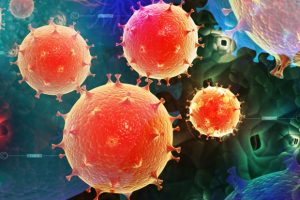Frequent, regular rapid antigen testing plus isolation could cut COVID-19 risk among groups of people

Among oil-rig workers, shipping crews, and other groups of people who work closely together, COVID-19 can spread like wildfire. Yet trying to prevent spread with long quarantines can be just as disruptive.
In a new study, Yale epidemiologists hit upon a more practical strategy for COVID surveillance on the part of companies, teams, schools, and communities.
With frequent, regular rapid antigen (RA) testing, plus isolating people who test positive, organizations can cut the risk of out-of-control COVID outbreaks effectively and make long quarantines a thing of the past, the researchers say.
This is possible even though RA tests are less accurate than gold-standard PCR tests. The reason? RA tests deliver results fast, making up in speed for what they lack in accuracy. That gives them an edge when they're used frequently to test groups of people.
There's been a lot of throwing up of our hands lately and saying, 'What can we do?' People think there's no way to eliminate risk. But that's not true. If you test frequently enough, you can repress transmission within a community."
Jeffrey Townsend, senior author, the Elihu Professor of Biostatistics at the Yale School of Public Health and professor of ecology and evolutionary biology at Yale University
The study appears online in Communications Medicine.
In an October 2021 study that changed policy at the U.S. Centers for Disease Control and Prevention (CDC), Townsend's team demonstrated that 14-day quarantines can safely be shortened to seven days if people test negative with a PCR test on the seventh day.
The current study suggests a way that groups can shorten quarantine even more.
Rapid antigen testing can offer a path forward
For the study, the researchers used public data and mathematical models to study three questions:
- After a person leaves quarantine with a negative RA test, how likely are they to transmit COVID to others?
- If they transmit COVID, how many people are likely to become infected?
- How do 18 commercially available, FDA-authorized RA tests stack up against PCR tests in terms of accuracy?
Taking into account variations in different commercially available RA tests, the authors found that the ability of these tests to reduce post-quarantine transmission depends on (1) how long quarantine lasts and (2) how fast results come back. When the RA tests are taken in relation to a person's infection status -; before, during, or after symptoms appear -; is also important.
Speed is key. Though less accurate than the PCR test, RA testing gives results in minutes, while a PCR test may take many hours or even days, hampering real-time detection of who is infectious. After all, people may contract or transmit COVID while they wait for results.
When testing to exit a two-day or shorter quarantine, the authors found, a negative quick-turnaround RA test can reduce COVID transmission more effectively than a 24-hour-turnaround PCR test.
"It turns out that the rapid antigen tests are basically as effective as PCR if there's a day's delay to get your PCR results," Townsend said. "Notifying people that they're sick is critical to them preventing further transmission."
How often should testing occur?
With every-other-day testing, all RA test brands -; even less accurate ones -; work to suppress COVID outbreaks, the authors found.
"Any transmission will probably peter out very quickly," Townsend said.
Testing every three days was feasible with some RA tests, while others weren't accurate enough to offer a clear picture.
Testing every four or five days, though, risked COVID spreading out of control.
With masking, ventilation, vaccines, and other related measures in place, the protection that frequent testing can offer is even stronger, Townsend said.
"If you're doing this regular testing for sports teams and other people who are working closely together, you can give them a sense of assurance that it's okay for them to be in that group," he said. "It doesn't mean no one's going to get COVID-19. But it means that there's not going to be these extended transmissions within groups. So, people can feel some sense of assuredness that their group, at least, is at relatively low risk."
Yale School of Public Health
Wells, C.R., et al. (2022) Comparative analyses of eighteen rapid antigen tests and RT-PCR for COVID-19 quarantine and surveillance-based isolation. Communications Medicine. doi.org/10.1038/s43856-022-00147-y.
Posted in: Medical Research News | Disease/Infection News | Healthcare News
Tags: Antigen, Bioinformatics, covid-19, Disease Modeling, Medicine, Microbiology, Public Health, Research
Source: Read Full Article




